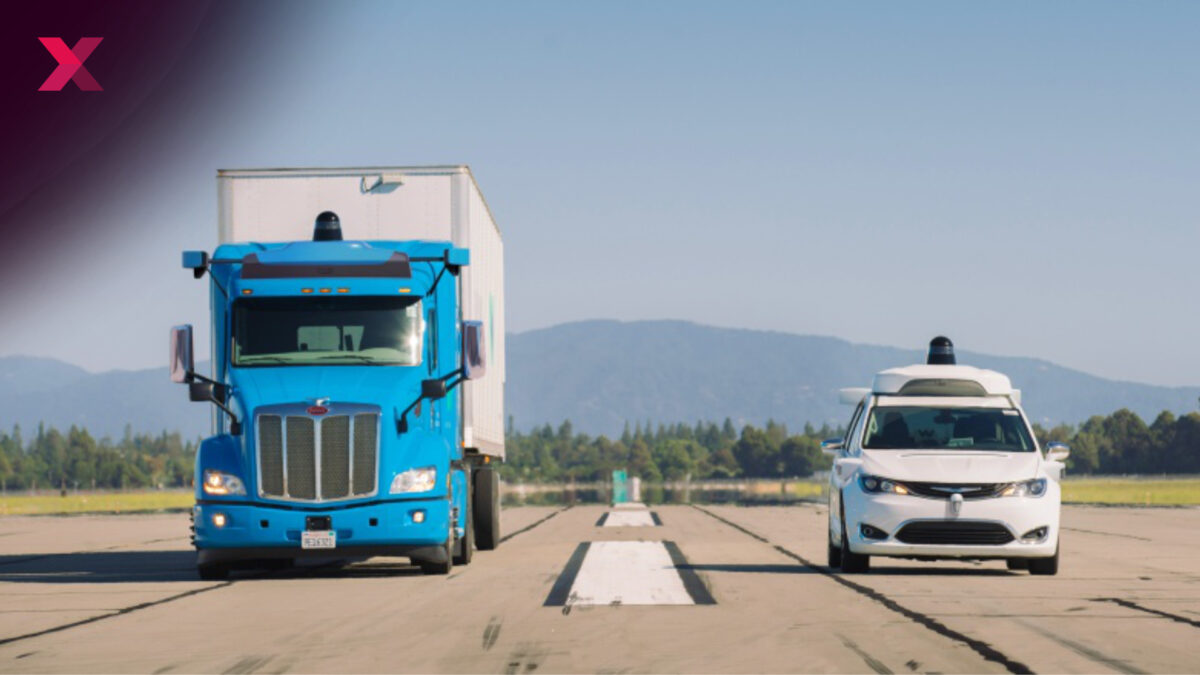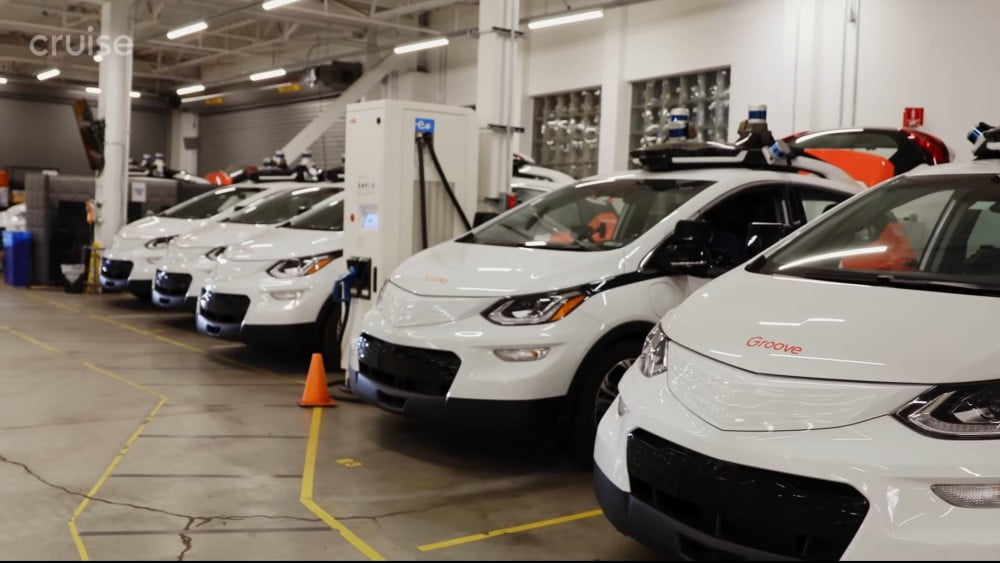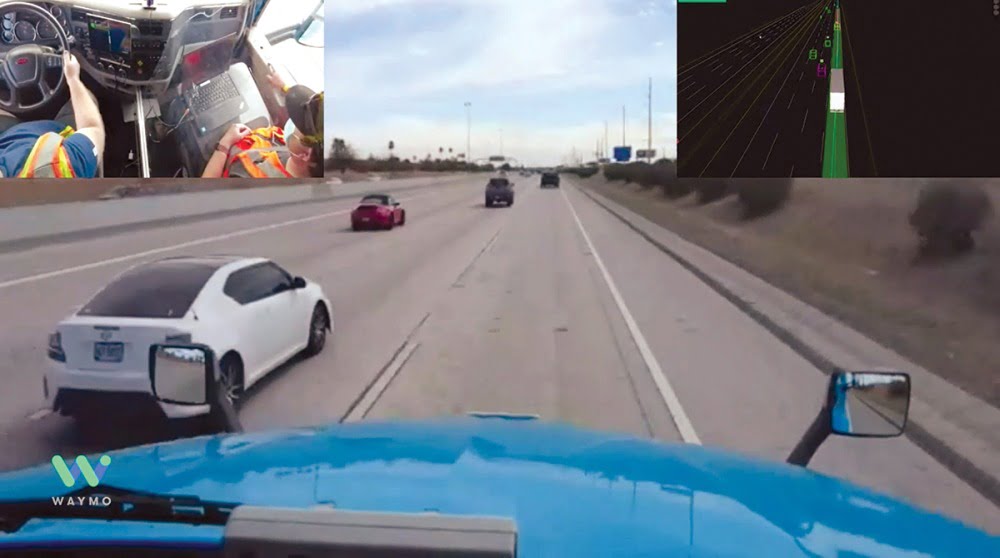Autonomous driving: Tesla under scrutiny, Cruise still on the rise

Tesla's Autopilot faces criticism again, Cruise continues to outrun everyone, Waymo wants more robo-trucks and Baidu is expanding Apollo. The robocar week in review.
There was some news about autonomous driving again last week that you shouldn't miss. General Motors subsidiary Cruise is brimming with confidence, reporting one success after another, while Tesla continues to struggle with the dark side of the technology - or rather, the mirages.
In China, the rumor of a possible takeover of Huawei's smart car division by VW caused a stir. In the meantime, the AI giant Baidu expanded its robot cab network almost unnoticed by the Western world. Google's sister company Waymo, meanwhile, is going all out with its robo-trucks. The week in review.
Content
Tesla’s Autopilot is under scrutiny again
Tesla's Autopilot continues to have a tough time. The National Highway Traffic Safety Administration (NHTSA) is now launching an investigation because of a recurring problem with phantom braking in some Teslas. The Washington Post reported numerous complaints of inappropriate automatic braking back in early February.

With its focus on Tesla Vision, the company reduced the number of sensors and relied fully on camera AI. | Image: Tesla
Now there are more details: In recent weeks, the NHTSA had received another 250 complaints from Tesla owners who were affected by unprovoked braking. Reason enough for the authority to initiate a search.
Sometimes the system mistakes a shadow for an object, sometimes the vehicle brakes for no apparent reason at highway speeds, or comes to a halt when a truck comes along in the far distance in the oncoming lane. In all, about 416,000 Tesla vehicles of the current Model 3 and Model Y are said to be affected.
Cruise and GM close to NHTSA license for commercial robo-taxis
Cruise is also currently dealing with the NHTSA, but for a much more positive reason. Together with parent company General Motors, the company has submitted an application to NHTSA to build and commercially operate an autonomous driving shuttle.
The vehicle in question is the Cruise Origin, which the company has had in the pipeline for nearly two years. The all-electric shuttle bus is designed from the ground up for autonomous driving, has no cockpit and accordingly no pedals or steering wheel. The electrically powered vehicle virtually consists only of a passenger compartment.
Cruise was recently granted a test license for a driverless, autonomous robotaxi service in San Francisco. This will use Chevrolet Bolts equipped by Cruise and powered by electricity. Production of the Cruise Origin is scheduled to begin later this year at GM's Factory Zero Detroit Hamtrack Assembly Center.
Walmart and Cruise expand autonomous delivery service
The good news for Cruise isn't slowing down. As TechCrunch reports, the company is looking to expand its joint project with backer Walmart. Last year, Walmart got on board with Cruise, announcing plans for a zero-emission, autonomous-driving delivery service.

Cruise will use autonomously driving e-cars to deliver goods for more of the Walmart retail chain's stores. | Image: Cruise LLC
The collaboration began in early 2022 as a pilot project in the US state of Arizona. There, a small fleet of self-driving Chevy Bolts delivers goods from a Walmart store near Scottsdale. That's probably no longer enough for the cooperation partners. Over the course of the year, a total of eight stores across the country are to be equipped with the Cruise robot delivery service.
Baidu launches autonomous driving cab service in Shenzhen
Besides the U.S., the second world power in autonomous driving currently appears to be China. Countless tests are being conducted in major metropolitan areas and even dedicated roads are being built for autonomous driving. One of the top players there is the AI giant Baidu with its Apollo robotaxi division.
Last Thursday, Baidu opened an Apollo branch in downtown Shenzhen. However, supervisors are still behind the wheel there for safety reasons. Apollo cabs serve fifty different stations in Shenzhen, a city of 13 million people. Passengers can book rides via the smartphone app Apollo Go. Apollo Go is the largest autonomous cab service in the world, beating out industry giants such as Waymo and Cruise.
Waymo Via: Next collaboration for autonomous driving trucks
Waymo has been flirting with autonomous driving trucks for some time. In Texas, Waymo is partnering with UPS to test robotic trucks that will transport freight between UPS's Dallas-Fort Worth and Houston locations. Waymo is also working with JB Hunt and Daimler's truck division. Its own robot truck service called Waymo Via is also in the pipeline.

Waymo gave selected members of the media a look through the cockpit of an autonomous driving truck last year. | Image: Waymo / TTNews
Now Waymo is embarking on its next truck collaboration. This time, the Alphabet subsidiary plans to work with fleet operator C.H. Robinson Worldwide to send autonomous driving trucks with safety drivers onto Texas roads in the coming weeks.
Robinson CCO Chris O'Brien sees the development of autonomous long-haul trucks as making fleet planning easier. Even before the pandemic, he says, the company was struggling with a chronic driver shortage.
Waymo continues to exercise caution with its robotrucks. "We also have a lot of humility that our technology solution is just one piece of a very complex puzzle," said Charlie Jatt, head of commercialization for trucks at Waymo Via. It will take a gradual evolution to reap the full benefits, Jatt said.
Read more about autonomous driving:
- Autonomous driving: Dubai catches up & fewer startups test in California
- Autonomous cabs launch in San Francisco – first driving reports
- Autonomous driving: Exterior airbags to protect pedestrians
Note: Links to online stores in articles can be so-called affiliate links. If you buy through this link, MIXED receives a commission from the provider. For you the price does not change.